Mail Server is one of the important and critical Server for any organization as most of business communication done via emails only. In Open source world there are couple of free email server but Zimbra is one of the leading mail servers. Zimbra Mail Server a.k.a ZCS (Zimbra Collaboration Suite) comes in two versions, Open Source and enterprise version.
Prerequisites of Zimbra Mail Server (ZCS)
- Minimal CentOS 7
- 8 GB RAM
- At least 5 GB Free Space on /opt
- FQDN (Fully Qualified Domain Name), in my case it is “mail.linuxtechi.com”
- A & MX record for your Server
In this article we will demonstrate how to install Open Source ZCS 8.8.10 on a CentOS 7.
Step:1) Login to CentOS 7 and apply updates.
Login to your CentOS 7 Server and apply the latest updates using following yum command and then reboot,
~]# yum update -y ; reboot
After the reboot, set the hostname of your server, in my case I am setting it as “mail.linuxtechi.com”
~]# hostnamectl set-hostname "mail.linuxtechi.com" ~]# exec bash
Add the following lines in /etc/hosts file,
192.168.0.108 mail.linuxtechi.com mail
After configuring the hostname, verify the A and MX is configure for your domain using dig command,
[root@mail ~]# dig -t A mail.linuxtechi.com [root@mail ~]# dig -t MX linuxtechi.com
Step:2) Install Zimbra dependencies using yum
Run the below command to install Zimbra / ZCS dependencies
[root@mail ~]# yum install unzip net-tools sysstat openssh-clients perl-core libaio nmap-ncat libstdc++.so.6 wget -y
Step:3) Download latest version of Zimbra (ZCS 8.8.10) using wget command
Create a folder with the name “zimbra”
[root@mail ~]# mkdir zimbra && cd zimbra
Use below wget command to download the latest version of ZCS 8.8.10 from the terminal,
[root@mail zimbra]# wget https://files.zimbra.com/downloads/8.8.10_GA/zcs-8.8.10_GA_3039.RHEL7_64.20180928094617.tgz --no-check-certificate
Step:4 Install Zimbra / ZCS 8.8.10
Extract the downloaded tgz file of ZCS 8.8.10 using the beneath tar command
[root@mail zimbra]# tar zxpvf zcs-8.8.10_GA_3039.RHEL7_64.20180928094617.tgz
Go to extracted folder and run the install script,
[root@mail zimbra]# cd zcs-8.8.10_GA_3039.RHEL7_64.20180928094617 [root@mail zcs-8.8.10_GA_3039.RHEL7_64.20180928094617]# ./install.sh
Once we run above install script then we will get text-based installation wizard, to Accept the license, press Y
Now Configure the Zimbra package repository and select the all Zimbra Components to install.
Press Y to modify the System,
After pressing Y, it will download the Zimbra related packages and it can take time depending upon on your internet speed.
Once all the Zimbra packages are installed in the backend then we will get the below window,
Now Press 7 and then 4 to set admin user password,
Now press “r” to go to previous menu and then press “a” to apply the changes.
Once all the changes are applied and Zimbra related services are started then we will get the output something like below,
Open the ports in the firewall in case os firewall is running on your server
[root@mail ~]# firewall-cmd --permanent --add-port={25,80,110,143,443,465,587,993,995,5222,5223,9071,7071}/tcp
success
[root@mail ~]# firewall-cmd --reload
success
[root@mail ~]#
Step:5) Access Zimbra Admin Portal & Web Mail Client
To access the Zimbra Admin Portal, type below URL in Web Browser
https://mail.linuxtechi.com:7071/
To access Zimbra Mail Web Client, type the following URL in the browser
https://mail.linuxtechi.com
Note: For both the URLs we can use user name as “admin” and password that we set during the installation
Step:6) Troubleshooting Zimbra Services and Logs
There can be some scenarios where some zimbra services might be stopped, to find zimbra services status from command line, run the following command,
[root@mail ~]# su - zimbra Last login: Sun Oct 7 14:59:48 IST 2018 on pts/0 [zimbra@mail ~]$ zmcontrol status Host mail.linuxtechi.com amavis Running antispam Running antivirus Running dnscache Running imapd Running ldap Running logger Running mailbox Running memcached Running mta Running opendkim Running proxy Running service webapp Running snmp Running spell Running stats Running zimbra webapp Running zimbraAdmin webapp Running zimlet webapp Running zmconfigd Running [zimbra@mail ~]$
To restart the Zimbra Services use the following command,
[zimbra@mail ~]$ zmcontrol restart Host mail.linuxtechi.com Stopping zmconfigd...Done. Stopping imapd...Done. Stopping zimlet webapp...Done. Stopping zimbraAdmin webapp...Done. Stopping zimbra webapp...Done. Stopping service webapp...Done. Stopping stats...Done. Stopping mta...Done. Stopping spell...Done. Stopping snmp...Done. Stopping cbpolicyd...Done. Stopping archiving...Done. Stopping opendkim...Done. Stopping amavis...Done. Stopping antivirus...Done. Stopping antispam...Done. Stopping proxy...Done. Stopping memcached...Done. Stopping mailbox...Done. Stopping logger...Done. Stopping dnscache...Done. Stopping ldap...Done. Host mail.linuxtechi.com Starting ldap...Done. Starting zmconfigd...Done. Starting dnscache...Done. Starting logger...Done. Starting mailbox...Done. Starting memcached...Done. Starting proxy...Done. Starting amavis...Done. Starting antispam...Done. Starting antivirus...Done. Starting opendkim...Done. Starting snmp...Done. Starting spell...Done. Starting mta...Done. Starting stats...Done. Starting service webapp...Done. Starting zimbra webapp...Done. Starting zimbraAdmin webapp...Done. Starting zimlet webapp...Done. Starting imapd...Done. [zimbra@mail ~]$
All the log files for Zimbra server are kept under the folder “/opt/zimbra/log”
Note: In my case postfix was already installed and running on my centos 7 server because of that Zimbra MTA service was getting stopped and failed. To resolve this issue, I have to stopped and disable the postfix service and then restart Zimbra service using the “zmcontrol” command.
When you are done with Zimbra testing and want to uninstall it from the system, then run the “install.sh” script followed by “-u”
[root@mail ~]# cd /root/zimbra/zcs-8.8.10_GA_3039.RHEL7_64.20180928094617 [root@mail zcs-8.8.10_GA_3039.RHEL7_64.20180928094617]# ./install.sh -u
That’s conclude this article. If you find it informative please do share this among your Linux technical friends and share the feedback and comments in the comment section below.
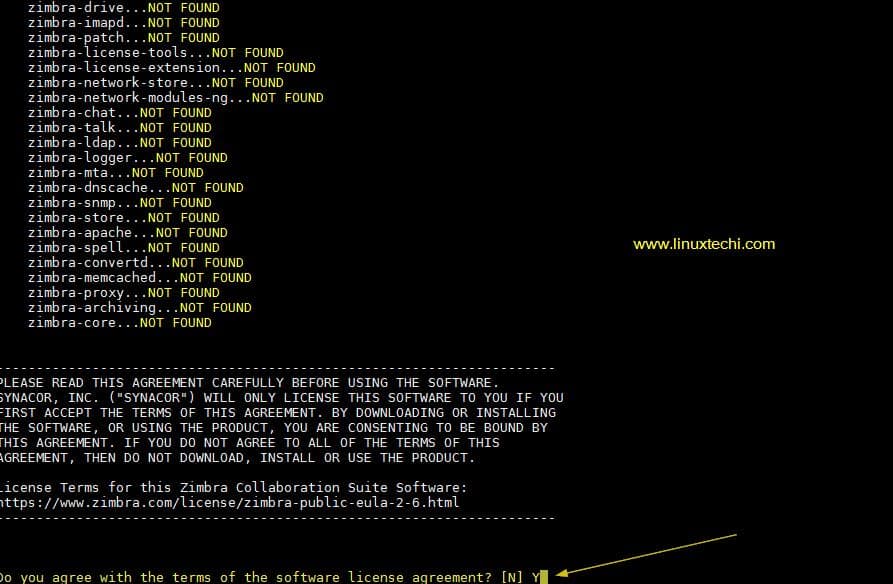
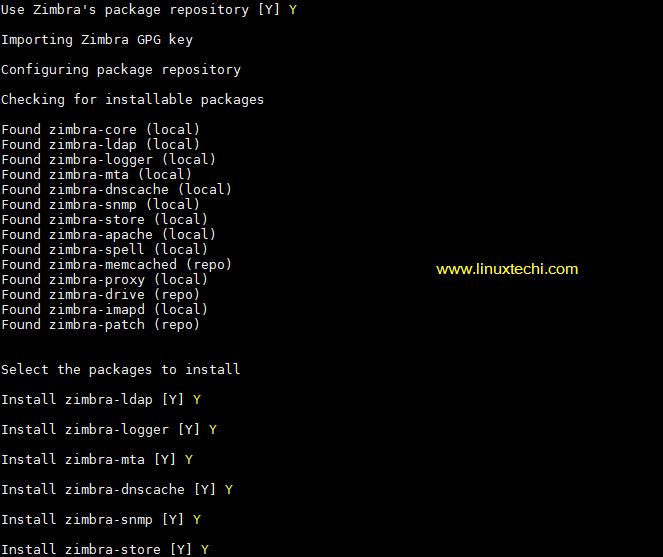
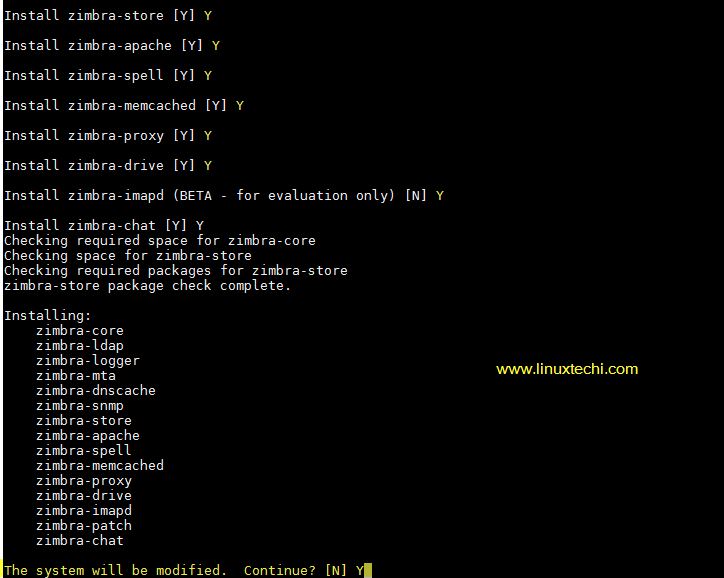
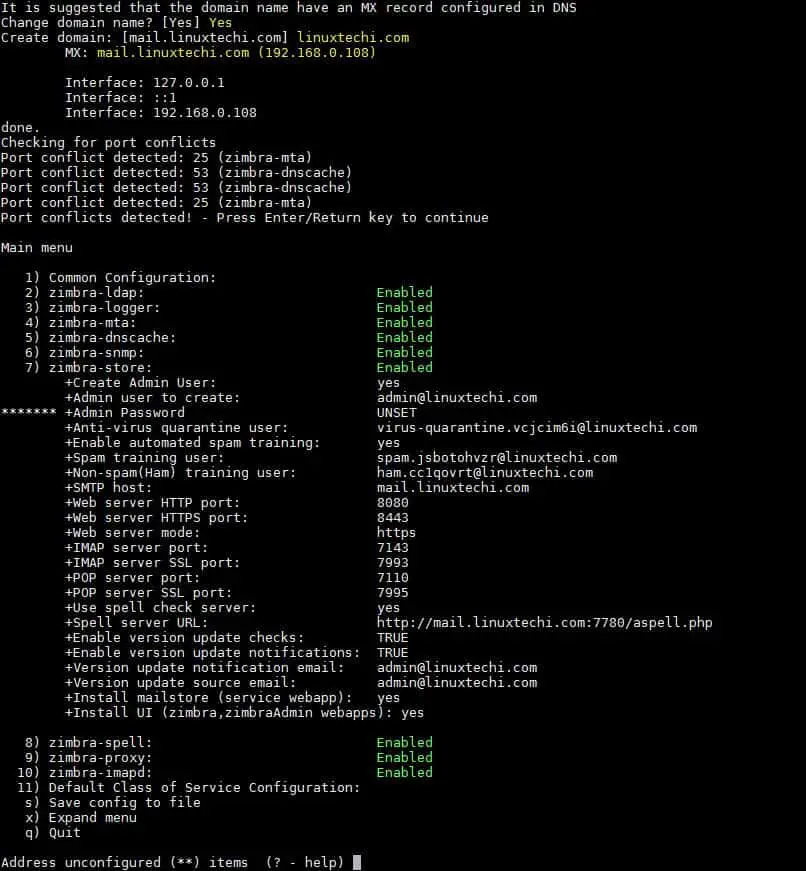
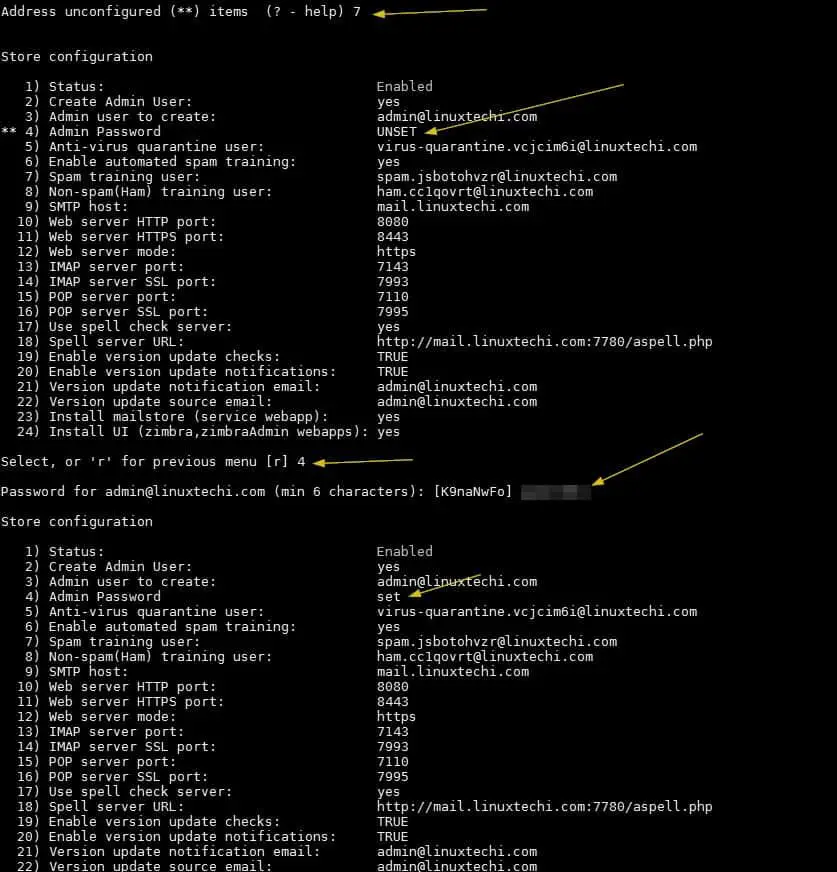
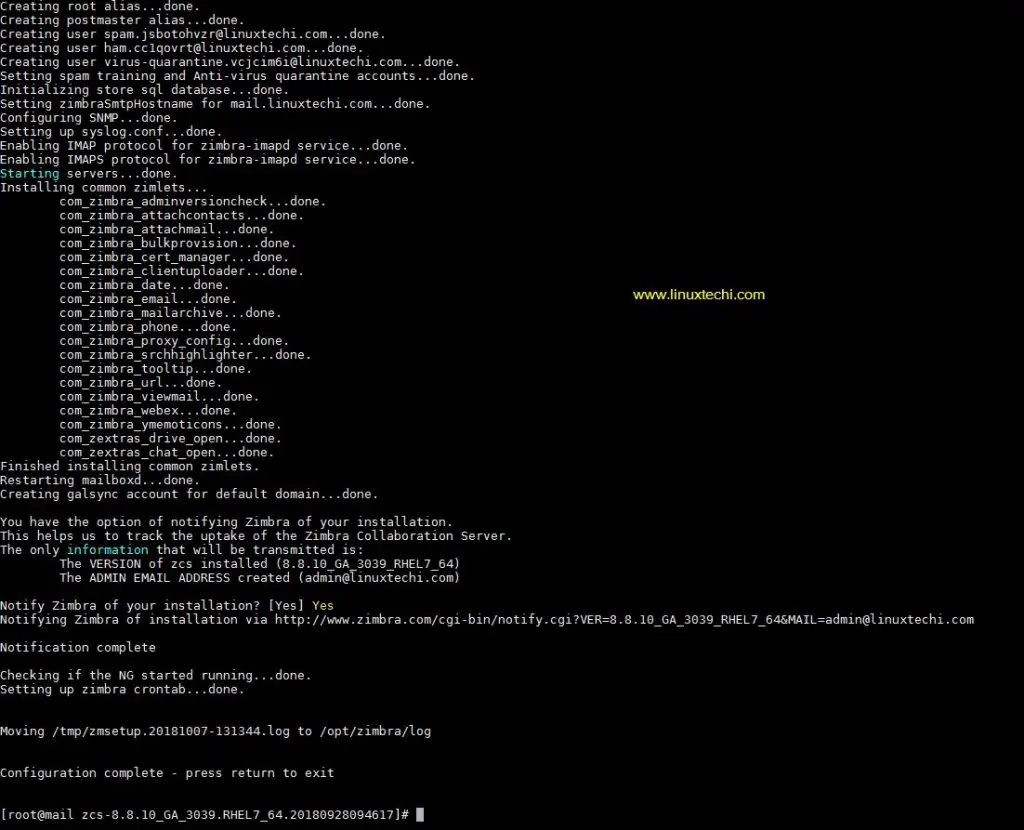
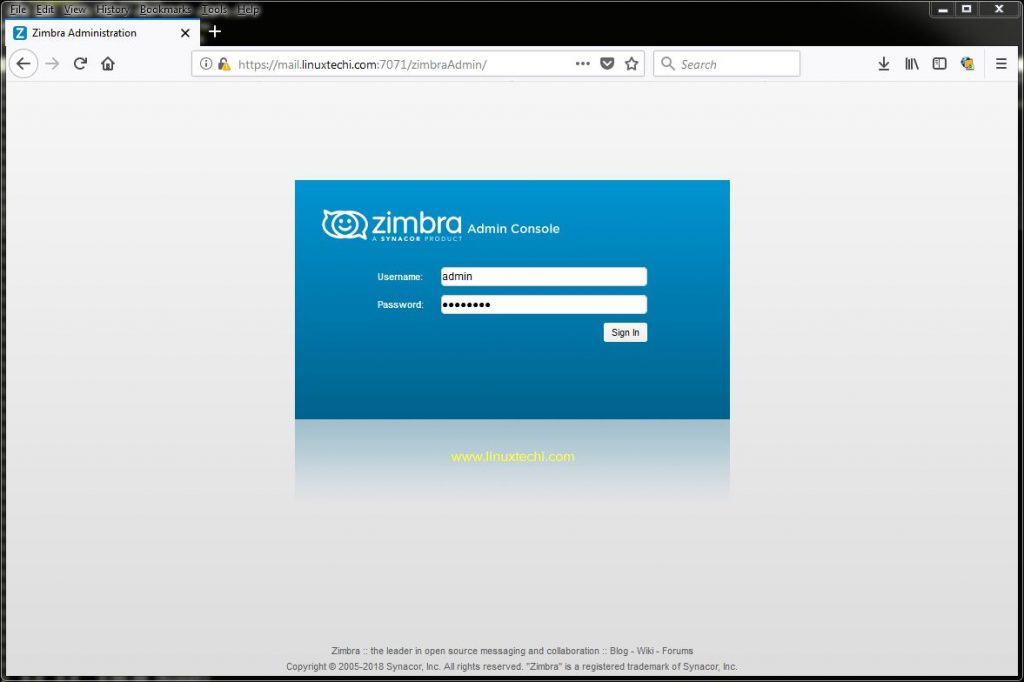
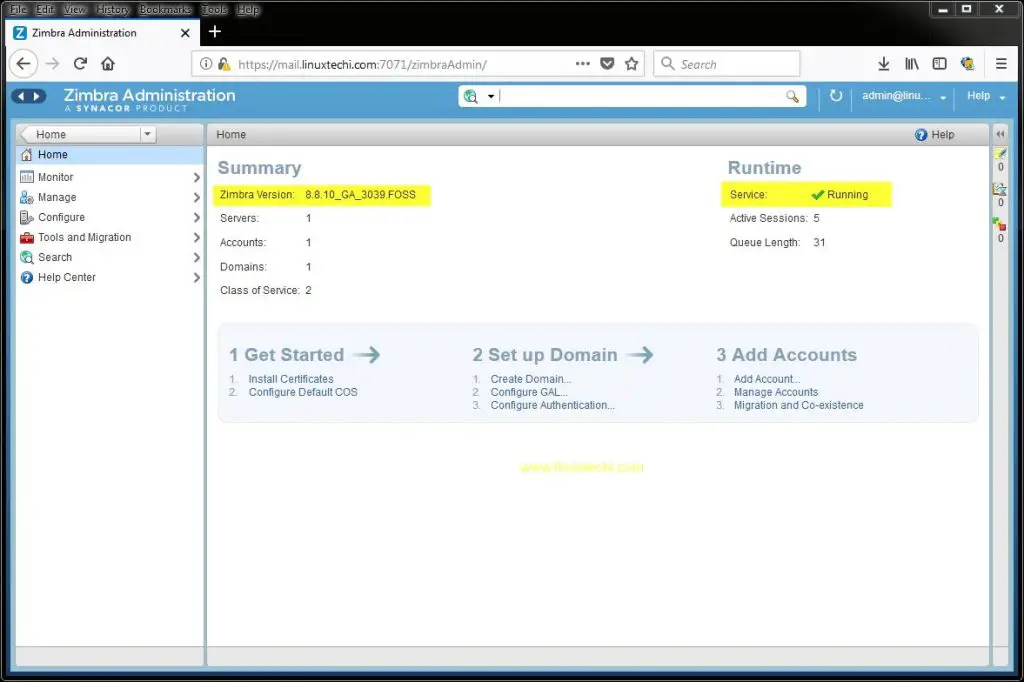
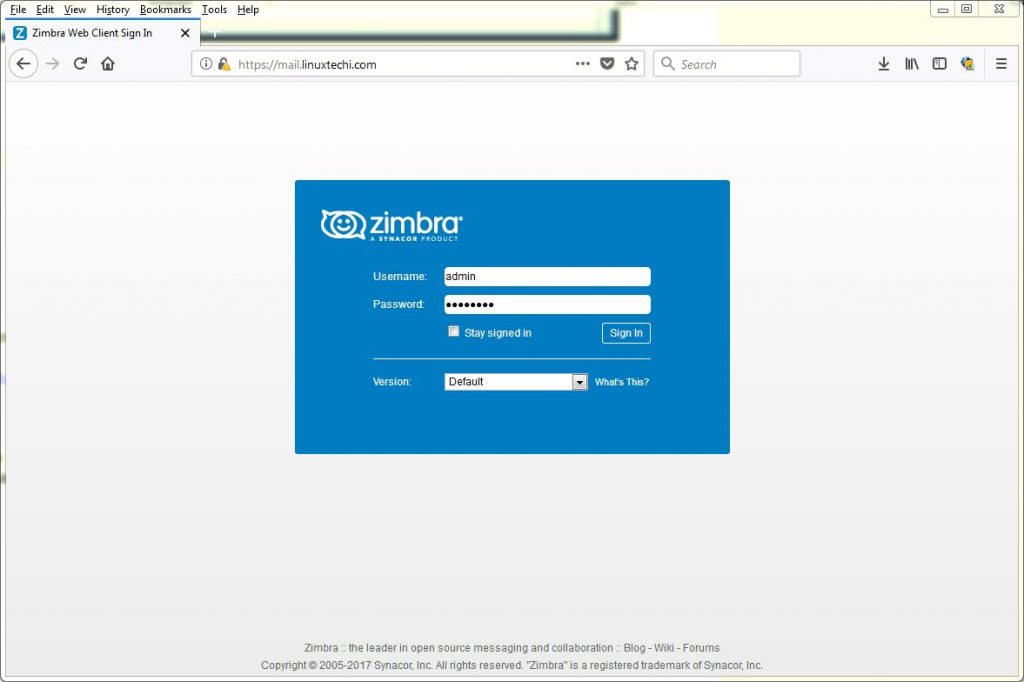
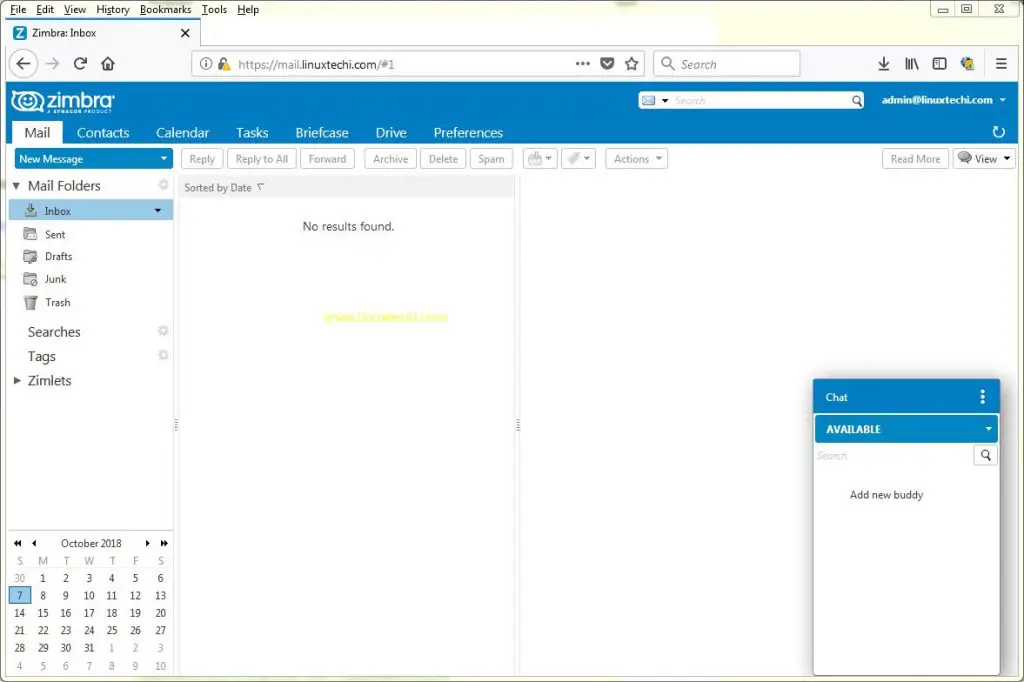
Is Zimbra 9 also Free ?
Mails are not going ..getting error on maillog-> connect to alt4.gmail-smtp-in.l.google.com[74.125.28.27]:25: Connection timed out
after complete installation of zimbra on centos 7,i can login web access.Created user account but when i send mail to any domain it said failed to send.whats the reason.Please help
Hi Tabarak,
Check the Zimbra postfix logs and zimbra postfix MTA service.
If all services are up and running and then check whether external IP configured on Zimbra is blacklisted is or not.